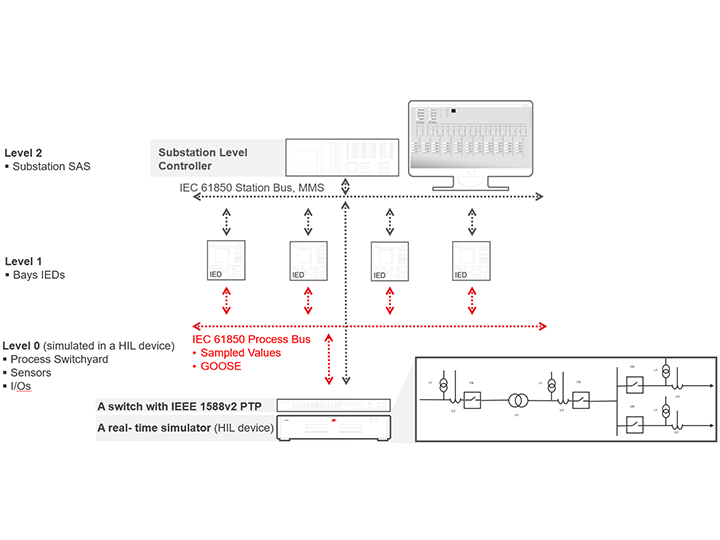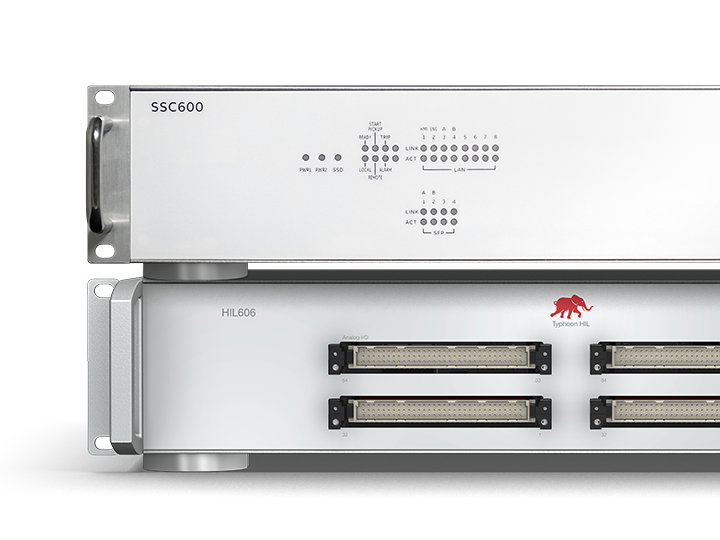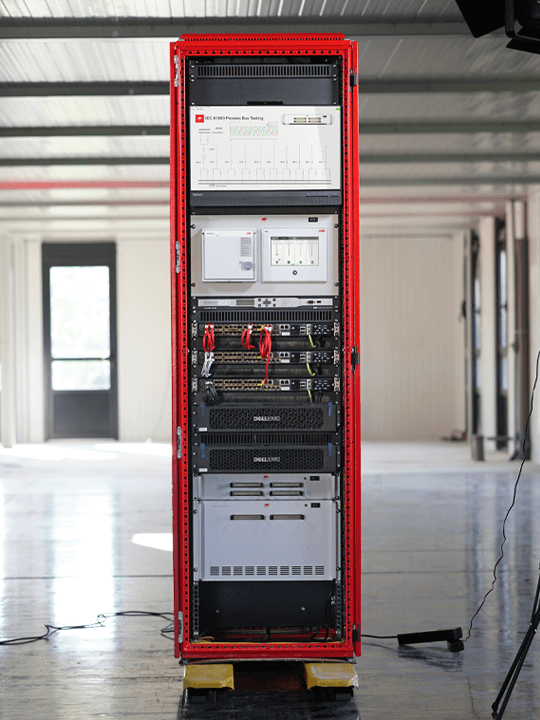Advanced Relay Testing for
Digital Substations
Your Partner in IEC 61850 and IEC 61869 Reliable Testing
Testing with Hardware-in-the-Loop (HIL) is crucial for modern substations in the power grid, especially concerning the IEC 61850 and IEC 61869 standards. These international standards for substation communication sets the groundwork for a shared data model and communication protocol, fostering interoperability among diverse vendors and systems within substations.


With Typhoon HIL, our solution offers a multitude of benefits, allowing you to:
- Accelerate substations tests within minutes instead of days using test automation tools.
- Conduct system level testing using IEC 61850 and IEC 61869.
- Replicate OEMs protection relays.
- Generate detailed models increasing the testing coverage of substations.
- Enhance testing coverage of the Advanced Relay Testing Solution (ARTS) setup which significantly decrease System Average Interruption Frequency Index (SAIDI) and System Average Interruption Frequency Index (SAIFI).
- Provide premium training for field engineers.
- Generate highly detailed PDF reports of testing procedures.
Streamline substation protection testing with seamless model-based automation and IEC 61850 compatibility with HIL.
Digital Substation HIL Testbed

The solution is a virtual testbed for protection and control of the modern substation. The testbed comprises of-the-shelf components for control and protection of the modern substations. The two independent switches are utilized to create two independent networks (LAN A and LAN B) for parallel redundancy protocol (PRP). The GPS grand master clock (GMC) provides synchronization for both networks. The centralized protection and control functions implemented on two redundant servers are going to perform the centralized protection of the substation. The merging unit and the protective device are used as a back-up protection device, with IEC 61850 and IEC 61869 capabilities.

